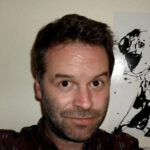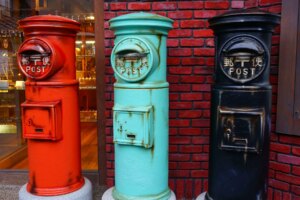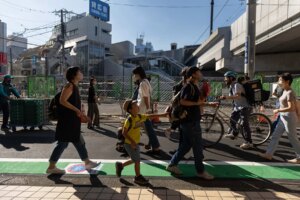Politics (政治) might not be everyone’s favorite topic to talk about. In fact, it might be some of those subjects you’d rather avoid. However, the government (政府) plays a huge role in our daily lives – from the cost of living and what’s taught in schools to taxation and available healthcare.
So to help you familiarise yourself with the political system in Japan and understand what your rights are when living there, this article covers the following:
- Government and political system in Japan
- The current Japanese Prime Minister
- Main political parties in Japan
- The electoral system in Japan
- Voting rights in Japan
- Political representation in Japan
- The judiciary system in Japan
- The state of the economy in Japan
- Grassroots politics and political activism
- Useful resources
Ground News
Get every side of the story with Ground News, the biggest source for breaking news around the world. This news aggregator lets you compare reporting on the same stories. Use data-driven media bias ratings to uncover political leanings and get the full picture. Stay informed on stories that matter with Ground News.
Government and political system in Japan
Japan is a constitutional monarchy and a parliamentary democracy, similar to countries like the Netherlands, Spain, and the United Kingdom (UK).
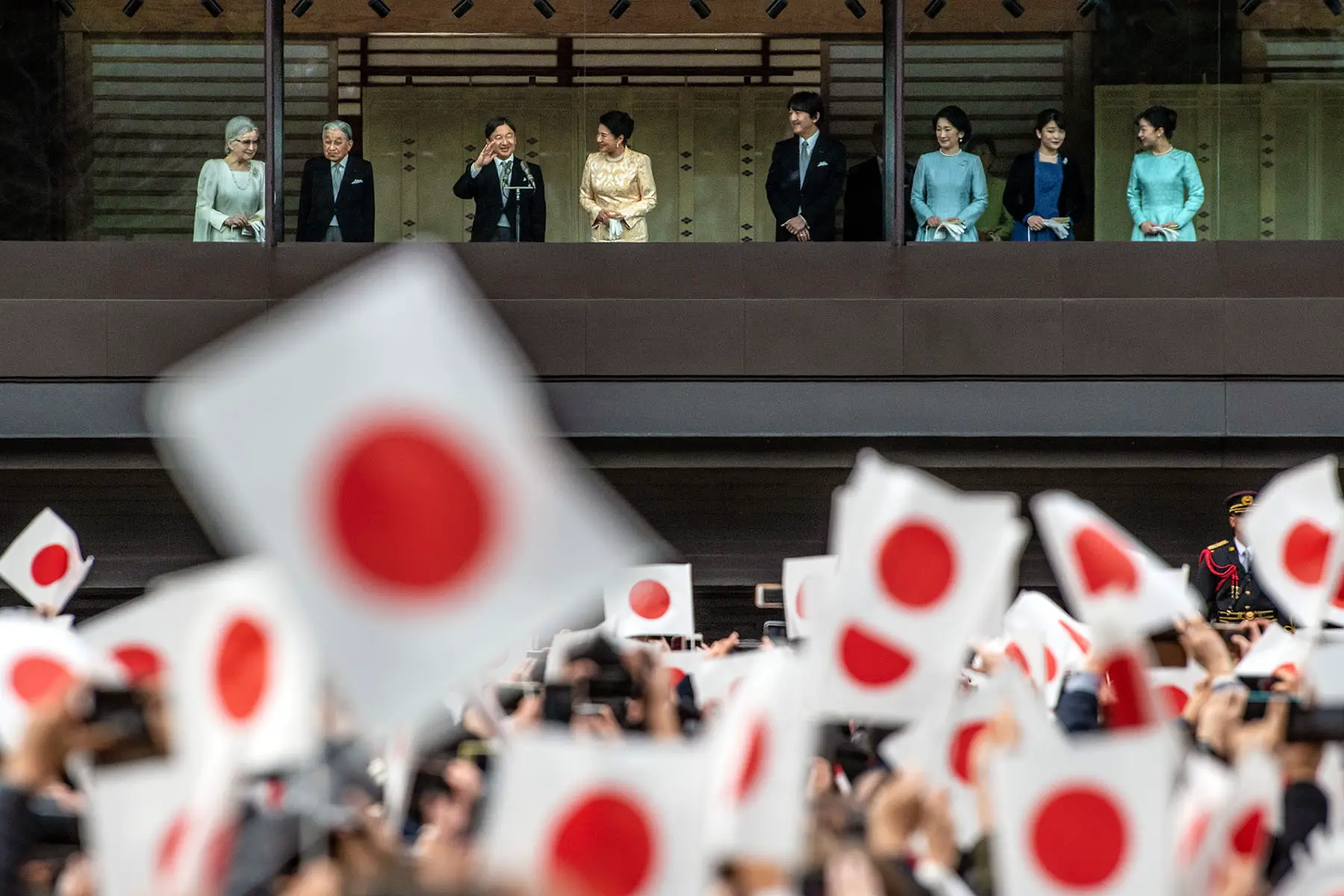
The official Head of State – though largely ceremonial – is the Emperor of Japan, Naruhito (徳仁天皇, Naruhito Tenno), or His Majesty the Emperor (天皇陛下). The Japanese political system is based on its 1947 Constitution, and is divided into executive, legislative, and judiciary branches.
| Power | Office |
| Executive power | The Japanese government, which is the Cabinet Office (内閣府), headed by the Prime Minister (内閣総理大臣) |
| Legislative power | The Diet (国会), containing the upper House of Councillors (参議院) and the lower House of Representatives (衆議院) |
| Judiciary power | The Supreme Court of Japan (最高裁判所) and lower courts |
On a local level, there are two different tiers of government:
- Prefectural government: There are 47 prefectures (都道府県) across Japan
- Municipal government (市区町村): This is again subdivided into cities (市), wards (区, towns (町), and villages (村). In 2023, there were 772 cities, 175 wards, 743 towns, and 189 villages.
Prefectures and municipalities are both of equal status. They work together in local administration and jurisdiction according to their share of responsibilities.
Globally, Japan ranks 16th out of 167 countries on the 2023 EIU Democracy Index. The country is classed as a ‘full democracy’ and scores high on political pluralism (9.17 out of 10) and civil liberties (9.12 out of 10). That said, political participation only receives a score of 6.67 out of 10.
Political history of Japan
Japan’s political history has been remarkably stable since the United States’ (US) nuclear attacks on Hiroshima (広島) and Nagasaki (長崎), which ended the Second World War (WWII) in 1945.
After the 1947 Constitution came into effect, the Liberal Democratic Party (LDP – 自由民主党 or 自民党) has been the dominant political party. In fact, it has been the main governing party in all but six years since its creation in 1955.
Japan has experienced significant economic growth since the end of WWII. It is currently the third largest economy in the world after the US and China. The post-war years have also been characterized by Japan’s close political and economic relationship with the US. The latter viewed Japan as a key anti-communist ally in Asia during the Vietnam War and Cold War era.
The current Japanese Prime Minister
The current Prime Minister of Japan – and President of the LDP – is Shigeru Ishiba (石破 茂). He has been in power since October 2024, after his predecessor, Kishida Fumio (岸田 文雄), resigned when his government was caught up in the “worst political corruption scandal in decades.”

Ishiba called snap elections at the end of October 2024. This led the Liberal Democratic Party’s ruling coalition to lose its outright majority for the first time in 15 years.
Main political parties in Japan
Liberal Democratic Party
The LDP has been the dominant political party in postwar Japan and has been in continuous government since 2012. Led by current Prime Minister Shigeru Ishiba, the party is a blend of centrist conservatism and moderate Japanese nationalism.
Formed in 1955 from a merger of two previous conservative parties, the LDP has a fairly broad ‘catch-all’ appeal across Japan. Its ideology includes a stable welfare state, a liberal pro-business economy, and a moderate conservative stance on many social issues.
For example, it is more sympathetic towards LGBTQIA+ rights (の権利) than some other Japanese parties but it stops short of supporting same-sex marriage (同性婚).
The LDP currently rules with 118 out of 248 seats in the upper House of Councillors and 260 out of 465 seats in the lower House of Representatives.
Constitutional Democratic Party
The Constitutional Democratic Party (CDP – 立憲民主党) was formed in 2017 after splitting from the LDP. They stand on a moderate centrist liberal platform that combines a free market economy with policies such as:
- Progressive taxation
- Strong welfare policies
- Investment in renewable energy
- Support for LGBTQIA+ rights and same-sex marriage
- Grassroots democracy
The party has been led by Yoshihiko Noda (泉 健太) since 2024 and currently has 39 House Councilors seats and 97 representative seats.
Japan Innovation Party
Another recently formed party that has made headway in the 2021 elections is the Japan Innovation Party (JIP – 日本維新の会). This party was born in 2015 as a breakaway from the old Japan Innovation Party (維新の党).
Seen as more socially and economically liberal than the LDP, the JIP combines neoliberal economic policies with a decentralized approach that favors a stronger regional government.

Its policies include:
- A more deregulated labor market
- The introduction of a universal basic income
- The legalization of same-sex marriage
The party has also argued for changes to health insurance to include childbirth costs.
In the 2021 general election, the JIP broadened its appeal beyond its Kansai (関西) base to become the third-biggest parliamentary party. It currently has 21 seats in the House of Councillors and 40 seats in the House of Representatives. The party is led by Hirofumi Yoshimura and Seiji Maehara (馬場 伸幸), who became leaders in December 2024.
Komeito
Founded in 1964, Komeito (公明党) – commonly referred to as simply Komei – has close links to the Soka Gakkai (創価学会) Buddhist movement. The party embraces a moderate form of what it describes as ‘humanitarian socialism’. Its ideological stances include:
- Greater wealth redistribution
- More prefectural autonomy
- Protection of the environment
- Nuclear disarmament
Kōmei-tō has served in various coalition governments in Japan since the 1990s. It is a junior member of the current government, with 27 upper house and 32 lower house seats. Tetsuo Saito is the party’s current leader.
Democratic Party for the People
Created in 2018, the Democratic Party for the People (DPP or DPFP – 国民民主党) is similar in ideology to the LDP and the CDP. It describes itself as a “reform centrist party” that includes moderate conservatives to liberals and represents consumers, taxpayers, and workers.
In the 2021 general election, the party won 10 seats in the House of Councillors and 10 seats in the House of Representatives. The current interim party leader is Motohisa Furukawa.
Japanese Communist Party
With around 270,000 members, the Japanese Communist Party (JCP – 日本共産党) is one of the largest non-governing communist parties in the world. It began in 1922 and, although it has never been in power, was one of the largest opposition parties in Japan throughout much of the second half of the 20th century.
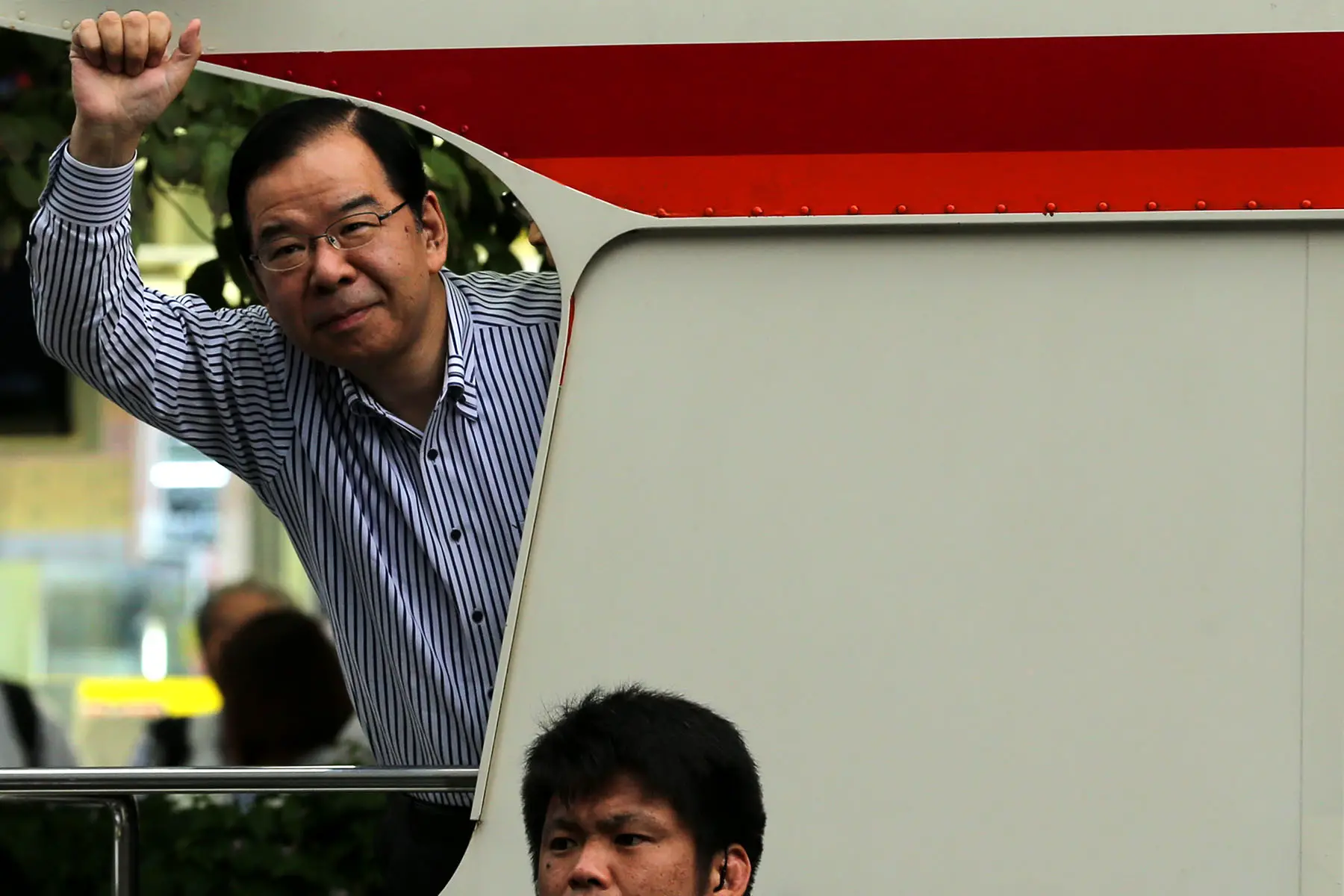
The party has consistently opposed Japan’s close relationship with the US while also keeping a distance from communist governments in China and the USSR. It supports democratic socialist revolution through parliamentary means, as well as:
- Non-alignment
- Dissolution of the military
- LGBTQAI+ rights
- Women’s rights
- Other traditional socialist ideologies (e.g., wealth redistribution and a large welfare state)
The JCP currently has 11 seats in the House of Councillors and 10 seats in the House of Representatives. Tomoko Tamura (志位 和夫) is the party chairman.
Reiwa Shinsengumi
Formed in 2019 by left-wing members of the former Liberal Party, Reiwa Shinsengumi’s (れいわ新選組) policies include:
- Raising the minimum wage
- Raising corporation tax
- Better rights for LGBTQIA+, women, migrants, and people living with disabilities
- Animals rights
The party currently has five seats in the upper House of Councillors and three seats in the lower House of Representatives.
Social Democratic Party
Formed in 1996 from the former Japan Socialist Party (JSP), the Social Democratic Party (SDP – 社会民主党, or 社民党) today doesn’t command the support that the JSP had for much of the latter half of the 20th century.
It has a traditional social democratic platform that includes high state spending in areas such as healthcare, education, and pensions. It also supports progressive social and cultural causes.
The party currently has two upper-house seats and one lower-house seat. Mizuho Fukushima is the current party leader.
The electoral system in Japan
Japan’s electoral system (選挙制度) is detailed in its 1947 constitution and there have been no significant electoral reforms since. The general public elects both houses of the Diet through a mix of first-past-the-post (FPTP) and party-list proportional representation (PPR).
FPTP is when the majority wins, and PPR is when each party is assigned representation according to the number of votes they receive.

If a single party wins over half of the seats in the lower House of Representatives, it forms Japan’s government. The party leader usually becomes Prime Minister and forms a Cabinet. There are currently 27 government ministers in Japan. In addition to ministries and departments, there are several government agencies. If no party wins an outright majority, then a coalition government is usually formed.
As well as national elections, there are also regional and local elections every four years to elect mayors (市長), governors (知事), and representative assemblies. Referendums can be held if passed by at least two-thirds of the members of both houses of the Diet (国会議事堂).
In 2022, the Freedom House Index rated Japan’s electoral process as free and fair, scoring it 96/100.
Houses of the Diet
The 248 members of the upper House of Councillors serve six-year terms. There are elections for half of the seats every three years. Voters elect 148 members through FPTP and 100 through PPR. While the House of Representatives holds most legislative power in Japan as they can draft and vote on bills, the role of the House of Councillors is to approve or reject bills.
The 465 members of the lower House of Representatives are elected every four years. There are 289 single-member districts where voters choose individual party members by FPTP. On top of this are 176 seats in 11 multi-member districts. Residents can vote and seats are allocated through PPR, based on vote share.
Voting rights in Japan
The voting (投票) age in Japan was lowered from 20 to 18 in 2016. All Japanese citizens have voting rights in national and local elections. That said, they need to have been a resident in the area for at least three months to vote in local elections.
Foreign residents currently cannot vote in Japan. Over the years, there have been campaigns to allow those with permanent residency to vote. At present, this has only been granted to permanent residents in around 40 of the country’s 1,700 municipalities in local referendums. Currently, the only way for expats to gain full voting rights is by becoming a citizen of Japan.
Japanese nationals living outside the country can also vote in one of Japan’s elections. If they have voter identification, they can do so:
- At the Japanese embassy or consulate in their country of residence
- By post
- Visiting Japan and voting in person
You do not need to register to vote in Japan. Instead, your local municipality will automatically send you a voting card or ballot for each election. Elections typically take place in public buildings such as community centers or primary schools.
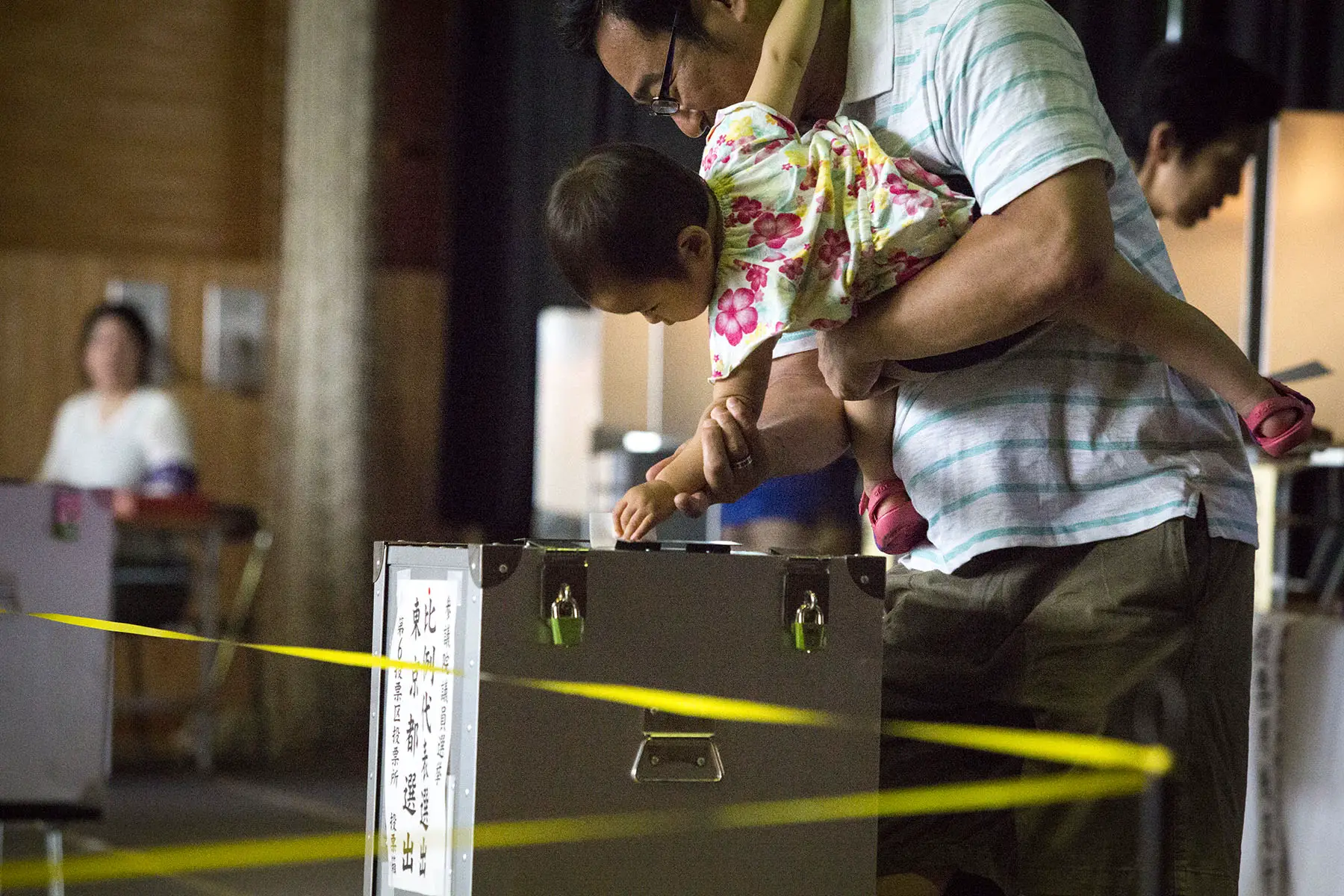
If you are looking to vote and want to make an informed choice, you can get current and unbiased news from outlets such as:
- Japan Times (ジャパンタイムズ)
- Japan Today
- NHK World-Japan (NHKワールド JAPAN)
Political representation in Japan
Japanese citizens are eligible to stand for election to the House of Representatives from the age of 25. They can submit themselves for the House of Councillors and prefectural offices from the age of 30. The Japanese constitution outlaws discrimination towards candidates on the basis of “race, creed, sex, social status, family origin, education, property, or income” (Article 44).
In terms of female representation, Japan scores very poorly. It currently ranks 165th globally on the percentage of women elected to parliament (10%). Things are only slightly better when it comes to women in the upper chamber (25.8% as of 2023).
That said, there was a recent shift in the male-dominated political sphere. In 2022, a record number of women and LGBTQIA+ candidates were campaigning for a seat on the House of Councilors.
Japan currently only has two parliamentarians living with disabilities, which activists remarkedly celebrated as “unprecedented” progress for disability representation and rights in the country.
The judiciary system in Japan
As said before, the judiciary is one of three independent branches of the state. Chapter Six of the Constitution details the powers of the judiciary and how it fits into the Japanese political system.
The Supreme Court is the highest court in Japan. It has whole judicial power to determine the “constitutionality of any law, order, regulation, or official act.” At the head of the court is the Chief Justice, officially appointed by the Emperor. This position is held by Tokura Saburo (戸倉 三郎) since 2022.
There are also 14 Supreme Court judges appointed by the Cabinet. Judges can be neither removed nor disciplined by executive powers. However, voters can remove them in referendums at general elections. Judges in Japan have to retire at the age of 70.
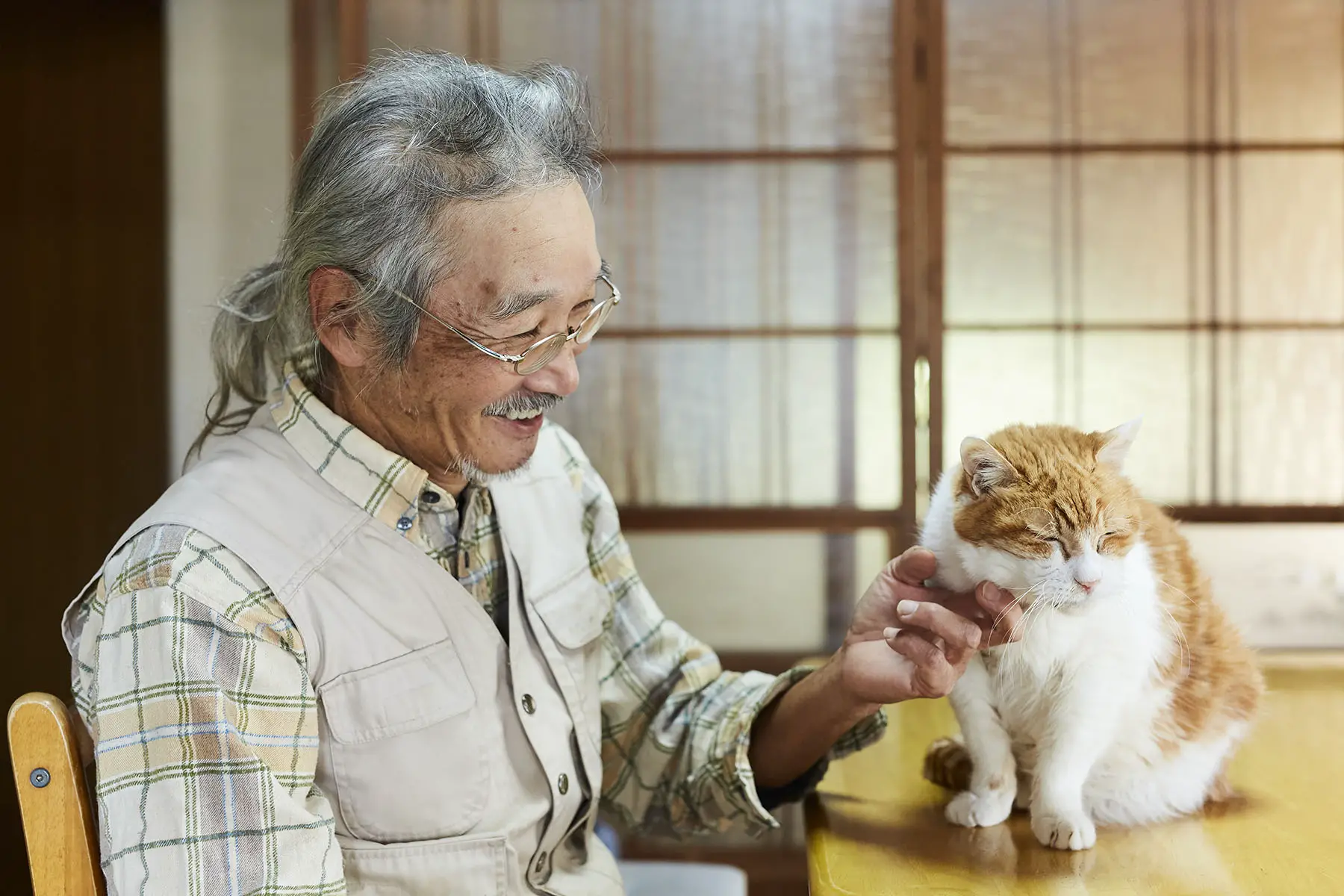
Below the Supreme Court are four other levels of court in Japan:
- High courts (高等裁判所) – eight courts that handle criminal appeals
- District courts (地方裁判所) – prefectural courts that handle most criminal, civil, and administrative cases
- Family courts (家庭裁判所) – prefectural courts that handle family and personal cases
- Summary courts (簡易裁判所) – over 400 local courts that deal with minor offenses
Although the judiciary is separate from other branches of government, the Ministry of Justice is responsible for formulating judicial policies. In addition to its constitution, Japan also has five other legal codes as part of its civil law system:
- Civil Code (民法)
- Commercial Code (商法)
- Penal Code (刑法)
- Code of Criminal Procedure (刑事訴訟法)
- Code of Civil Procedure (民事訴訟法典)
The state of the economy in Japan
Japan has a highly advanced social market economy that has developed significantly in the last 75 years. It has an annual GDP of US$4.41 trillion in 2023, which is the third-highest in the world after the US and China. However, its GDP per capita is US$42,140 which is below the OECD average of US$48,589 (2021).
Japan’s economy is dominated by the service and manufacturing sectors, which account for over 50% of the annual GDP. Key service sectors include financial services and tourism. The country is also the third-largest manufacturing nation worldwide as well as the third-largest automobile producer.
Like much of the world, Japan’s economy was hit hard by the COVID-19 pandemic. Although it previously ranked sixth on the Global Competitiveness Report produced by the World Economic Forum (WEF), the 2020 report highlighted that Japan had slipped down the rankings in many areas relating to pandemic recovery.
According to the most recent OECD report on Japan, the country has started to bounce back. In 2023, it has a predicted growth rate of 1.8%.
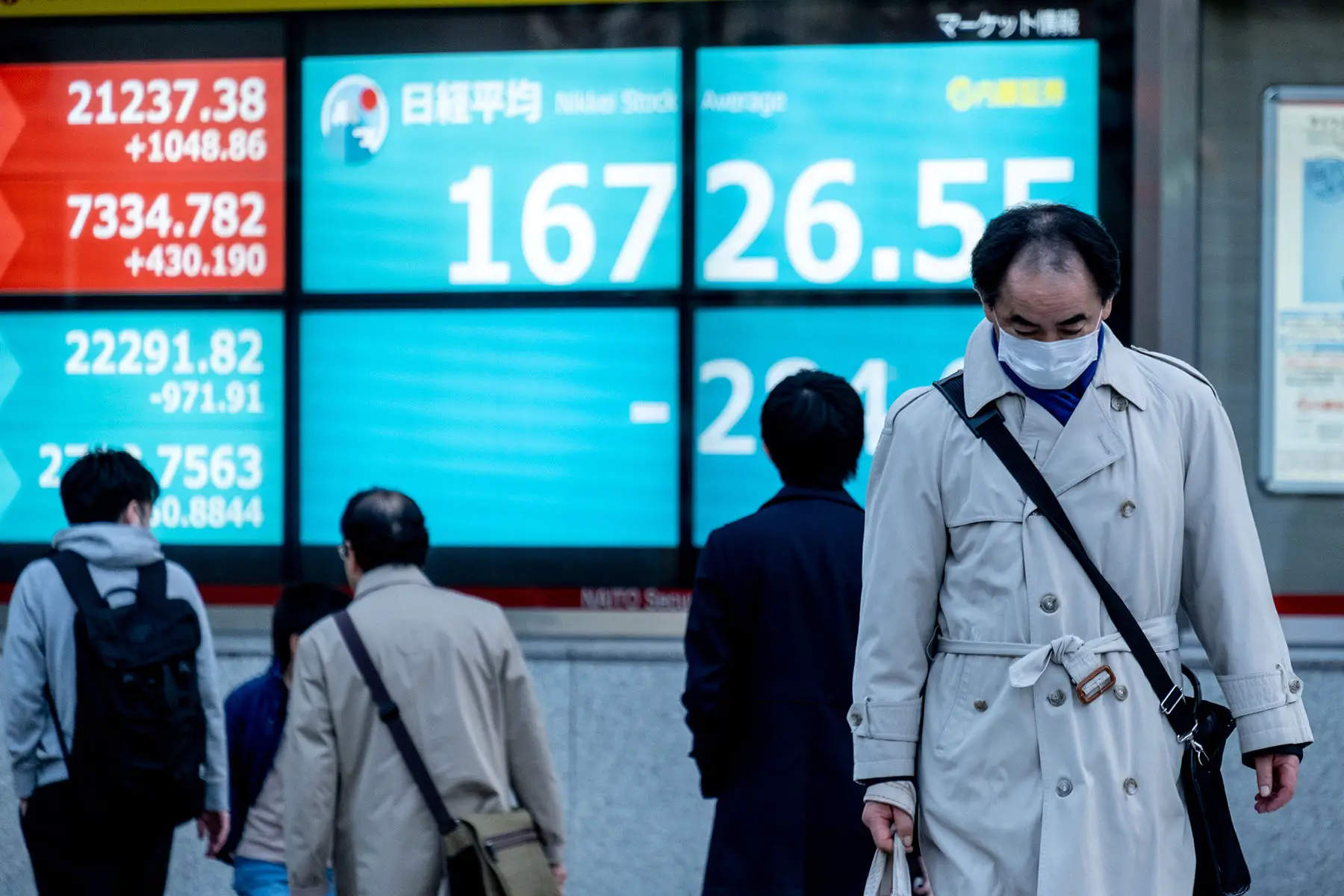
Current problems include record levels of the gross national debt, reduced productivity (exacerbated by the aging population), and the rising cost of living. The only bright spot is the unemployment rate, which remains low at 2.5%.
Grassroots politics and political activism
It is quite normal in Japanese culture to join a neighborhood association (町内会) or residents association (自治会). These voluntary-run groups operate at neighborhood and tenement block levels and deal with a range of community issues including community safety, street maintenance, and community events and activities. The groups typically charge small membership fees to cover administration costs.
You can find out details of any local association through your local government representative. They can also provide more information on involving yourself with local politics (e.g., attending local meetings or supporting campaigns).
Political activism in Japan
Activism in Japan has increased following the 2011 Fukushima Nuclear Disaster when people all over the country took to the streets in anti-nuclear protests.
In 2018, there was a #WithYou movement, that called for demonstrations after four men were acquitted of rape. Three of them were later convicted on appeal. After that, monthly protests known as Flower Demos became a forum where victims of rape and incest could speak out.
On a lighter – yet still sexist – note, there was also the #KuToo movement in 2019. This campaigned against high-heeled shoe policies in the workplace.
Notable groups that advocate for women’s rights, gender equality, and LGBTQIA+ rights include:
- Human Rights Watch Japan (ヒューマン・ライツ・ウォッチ東京)
- Japan Alliance for LGBT Legislation (J-ALL – LGBT法連合会)
- Stonewall Japan (ストーンウォール・ジャパン)
- Women’s Action Network (WAN)
In other fields of activism, one of the biggest protest groups in recent years has been Students Emerging Action for Liberal Democracies (SEALDS – シールズ). This group pushed against Japanese foreign policies. Prominent environmental activist organizations include Extinction Rebellion Japan (XR 日本) and Fridays For Future (FFF) Japan (フライデーズ・フォー・フューチャー・ジャパン).
Useful resources
- JapanGov – official website for the Japanese government
- e-Gov – online portal for the Japanese government
- House of Representatives – official website for the lower house of the Japanese parliament
- House of Councillors – official website for the upper house of the Japanese parliament

